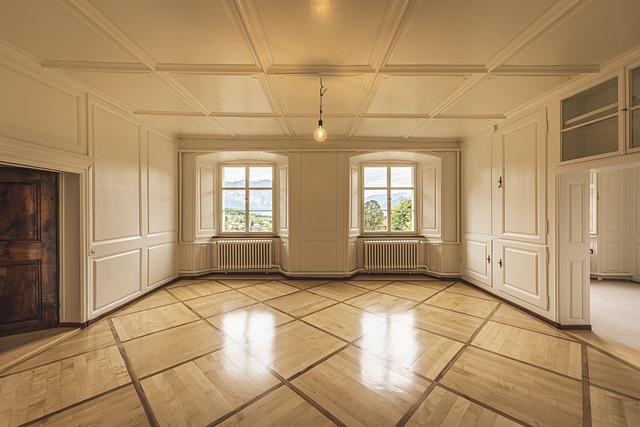We don’t give much thought to the hidden airflow highways winding through our houses – the ductwork carrying heating and cooling to every room. Yet choosing the right ductwork plays a huge role in comfort, energy efficiency, and indoor air quality. With just a few key decisions, you can transform scratchy breezes into room-filling serenity from your HVAC system!
DUCTwork 101 – Know Your System’s Circulation
Before selecting duct materials, it helps to understand how air flows from your heating/cooling unit through the duct network. Most systems use either a hot air furnace or an air conditioner evaporator fan to push air through ducts toward ceiling vents or registers that deliver heating/cooling to individual rooms. The return ductwork draws ambient temperature air back to the furnace or A/C unit to repeat the cycle.
Duct Sizing
Properly sized ducts ensure good airflow coverage. Oversized ducts let air zoom straight to the vent without cooling/heating nearby space efficiently. Technicians measure duct runs using a manual called ACCA Manual D based on many factors. Leave sizing to the pros!
Flexible or Rigid
Straight “trunk lines” off your furnace/heat pump use rigid metal for efficiency. But flexible ducts supply the last 5-10 feet run into rooms. They twist easily around obstacles while absorbing noise/vibration. A blend sets your home up well!
Duct Efficiency
Minor duct leaks erode comfort and send your energy bill soaring! Focus ductwork upgrades on airflow efficiency and eliminating leaks.
Key Ductwork Decisions
Now that we know how ductwork circulates heating/cooling in homes, what specific decisions influence performance? And where do promising upgrade opportunities hide? Ask yourself these questions when evaluating existing ducts or planning new installs:
- What Primary Material to Use?
One overarching choice in ductwork falls between metal or flexible as the primary construction material, each with pros and cons:
Metal Ductwork
– Very efficient, durable
– Transmits more noise
– Needs professional install
Flexible Ducts
– Easy DIY installation
– Absorbs noise, adaptable layout
– Prone to leaks and kinks over time
Hybrid systems effectively blend both in strategic areas.
- Insulation Level?
Duct “insulation” doesn’t refer to protecting against cold-like house insulation but rather to reducing sound transmission and preventing condensation drips through moisture barriers along the outside. More layers = better performance and efficiency.
Consider duct insulation levels by climate and noise needs:
- R4 = Basic condensation barrier
- R6 = Recommended for most climates
- R8+ = High humidity regions, superior soundproofing
- Which Fittings & Seals?
Duct fittings, joining separate runs seamlessly together, make or break system efficiency. Quality fittings that completely stop costly leaks are far better than budget options using flimsy tape at joints. Spend a bit more for proper metal sleeves, durable gaskets, and secure connections.
Cheap vinyl tape around dusty sheet metal joints spells leakage disaster! Pro flex ducts integrate quality fitting connections for simplicity. Evaluate options hands-on and conduct test pulls to assess durability.
- Manual or Automatic Dampers?
Duct branch runs often include dampers—movable flaps inside that manually or automatically regulate airflow to different rooms. Like traffic signals, dampers fine-tune comfort room by room.
Manual Dampers – Adjusted manually via connected levers to divert airflow as needed once set. They are infinitely variable yet require regular adjustment as seasons change.
Automatic Dampers – They self-regulate airflow by opening/closing in response to remote thermostat signals from each room. They cost more upfront but deliver set-and-forget convenience through the seasons.
How to Choose Ductwork Wisely
Whether constructing a new HVAC system or renovating an existing one, ductwork plays a hugely influential role in long-term home comfort, air quality, and energy efficiency. Keep these pointers in mind while selecting from the many material and component options:
Prioritize Airtight Efficiency – Leaky, winding ducts torpedo efficiency faster than anything. Evaluate choices based on realistic leakage rates once installed rather than advertised numbers. Performance counts most.
Consider Hybrid Mixing – Blend flexible and rigid ductwork to marry noise absorption with durable efficiency over straight, rigid metal only. An ounce of prevention…
Eyes Wide Open On Promises – Some materials like ultra-thin fiberglass duct board promise compact sizes but degrade faster while restricting airflow over time. Vet solutions thoroughly and read impartial reviews.
Future-Proof Choices – Amid the maze of duct materials available now, select components using proven technology that industry veterans are likely to still work on down the road. Standardization ensures long-term support.
Regular Duct Cleaning – No future-proof choice helps if you let residue, debris, and dust accumulate over time. Calling a professional service like Pure Air Duct Cleaning offers fresh peace of mind against buildup or critters. Target cleanings based on visual inspections rather than a generalized schedule.
Design For The Entire Lifecycle – A reliable HVAC dealer sizes ductwork for your home’s specific heating/cooling equipment using approved simulation tools. Design ductwork scaled precisely for your house. No guessing!
Making well-informed duct decisions ensures your home breathes easily for decades without wasting energy or comfort through leaks, restriction, and turbulence. And when upgrading existing ducts, don’t rip them all out when strategic fixes might save thousands! Follow our guidance and enjoy indoor weather perfection through the seasons ahead.







Recent Comments